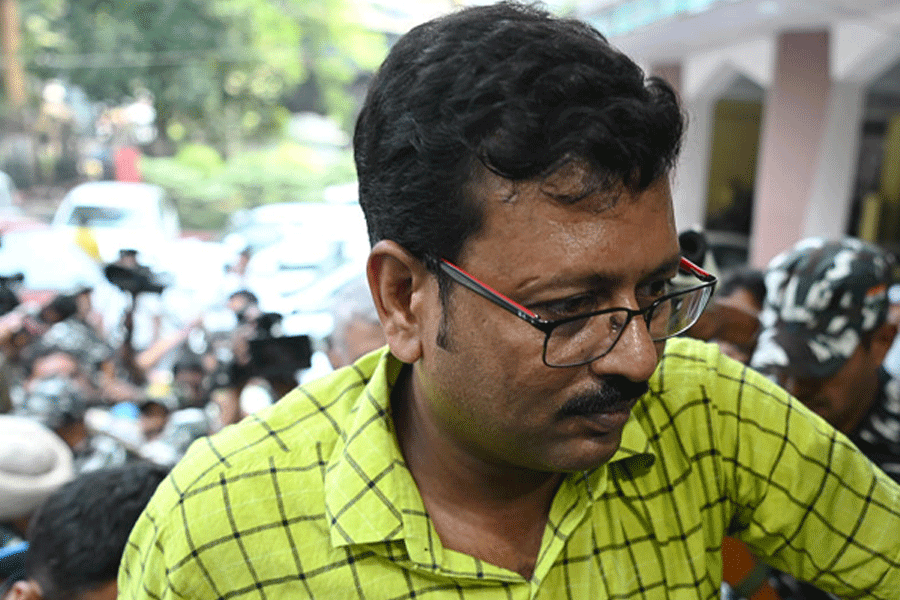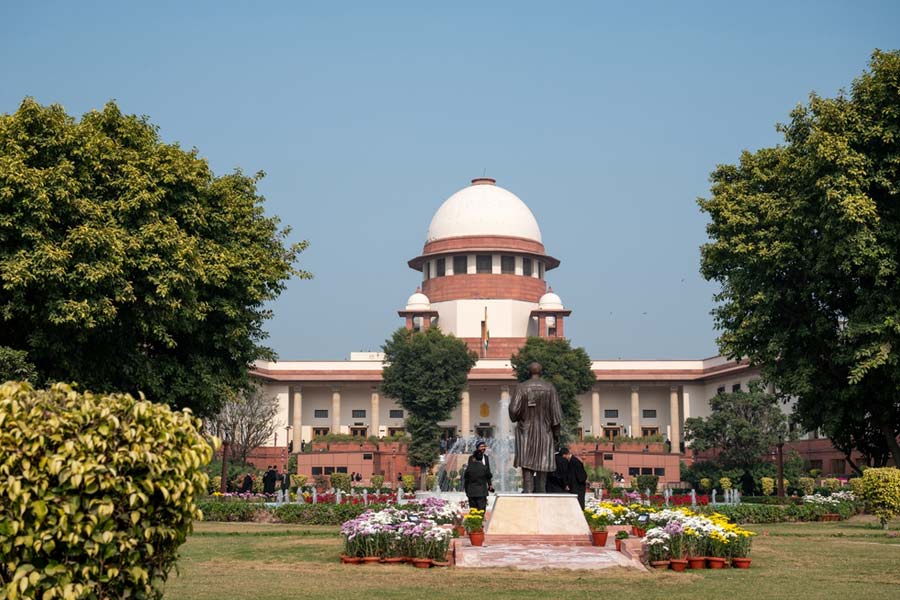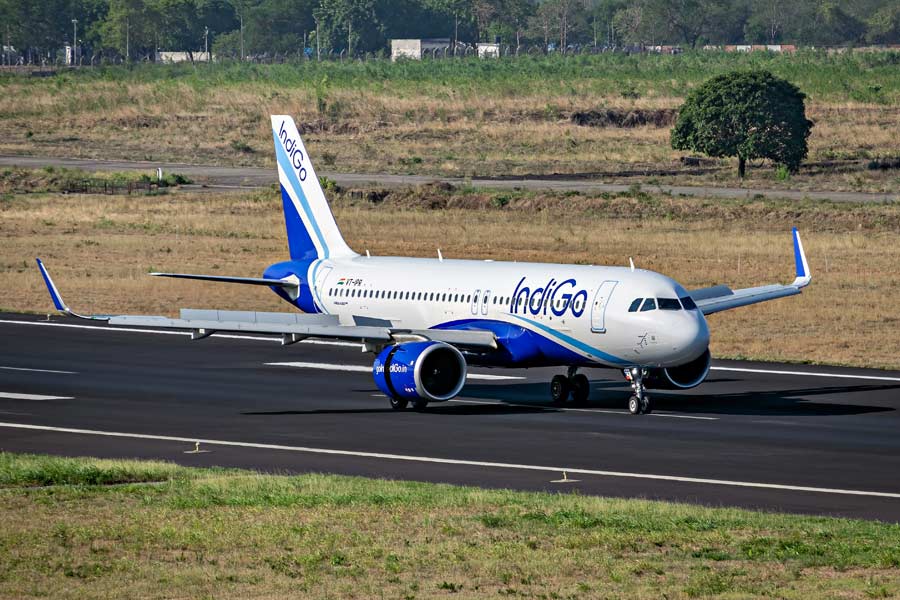 |
 |
| Walking through orchards in Sitlakhet (top) and indulging in a spot of rock-climbing |
It’s time to get up!” shouted a disembodied voice. I fumbled blearily for my mobile phone. The signals were as bad as might be expected in the mountainous wilderness miles ahead of Ranikhet, but at least I could see the time on its woefully under-worked screen. It was six in the morning. I groaned. When was the last time that I arose with the birds, I wondered sourly? I couldn’t even remember. Unzipping my tent, I wandered out. It was a cool, misty morning, the sun filtering through weakly from behind some puffy clouds. A hot cup of tea was thrust into my hands, and I strolled across to the land’s edge to look at the acres of rolling orchards beneath.
Around me, the camp hummed with quiet activity. Buckets of hot water fragrant from the wood fire were being placed in the tiled loos. The old one-eyed watchman with his trusty twelve bore was preparing to go home, after having spent the night guarding the camp. The cook, known as much for his superb qawalis as for his splendid keema parantha breakfasts, was hard at work. Hot cardamom-flavoured tea, coffee and rhododendron squash, were on tap.
 |
 |
 |
 |
| (From top to bottom): A view of the tents at the Idiscoveri camp, Sitlakhet; outside the camphouse in the Idiscoveri camp; on top of the world after climbing the rock; the Syahi Devi temple atop the hill above the campsite |
I reflected that the folks at the Idiscoveri camp at Sitlakhet really knew how to make people rough it out in luxury. They’ve been organising camps for children, educators and executives since 1996, and this bunch of XLRI graduates believes that the key to learning and human resource development, lies in first understanding oneself and discovering one’s own hidden potential.
Since they feel that the experience of camping, so distant from the regular city-slicker’s comfort zone, enhanced this process of self-discovery, they’d brought us, a group of teachers, principals and parents, to this spot. Our days were filled with activities and discussions and endless cups of tea and coffee with our facilitators Ashish Rajpal and Ronny Gulati.
But mornings and evenings were our own. So when Reema, a skilled mountaineer and our rock-climbing instructor, suggested a night-time hike in the forest, we all agreed. When the group assembled, everyone was armed with heavy torches. I even carried a compass ? not that I doubted Reema’s capabilities, but it was good to be sure. Reema saw our torches and said, “We won’t be needing those. How will your eyes get used to seeing in the dark if they’re blinded by torchlight?”
I asked her where we’d be heading, and she said, “less than a kilometre, up to an old grave across the hill. People say that if you put your ear to the gravestone, you can still hear sounds from beneath. But I don’t believe in all that!” So it was going to be a great lark. We were going for this fun after-dinner walk in what probably was a panther infested jungle ? in the dark, and up to a grave that people said was haunted! “Let’s go,” she said firmly, and we obediently set off.
I imagined the forest to be absolutely still and quiet at night, but it wasn’t. It was full of life, whispering and rustling mysteriously. The moon was high in the sky, and slowly, our eyes adjusted to the darkness. Was it the moonlight on the dark foliage or the magical smells and sounds of the forest that made us talk in whispers? I don’t know, but in the forest that night, most of us felt closer to nature than ever before.
The grave, when we reached it, seemed disappointingly close, as it meant we had to turn back from there. On the way back, two yellow eyes stared at us in the darkness of the trees. We stood stock still, and they went away. “Probably a dog,” said Reema airily. A couple of fireflies flickering on a branch caught my eye. “They wouldn’t have looked so pretty if you’d been shining your torches on them!” she whispered.
The next morning dawned bright and sunny, and somehow waking up at the regulation time didn’t hurt as much. So much so that we all decided to go for a morning walk to a 1,400-year-old temple on a hilltop. The oak forest, one of the few left in the region, stretched invitingly ahead. Brass bells tinkled everywhere in the temple, left by devotees who placed them there when the goddess granted their wishes. I stood there, gazing at the vistas below, and swore that when I got home, I’d try really hard never to allow my children and myself to get so distanced from nature again. A tough task, when your milk comes from packets and fruit from cartons.
“We’re going rock climbing today!” announced Ashish cheerily when we got back. Before we had a chance to write our wills, we set off. Wild mushrooms in the most impossible shades of red and orange glowed underfoot as we hiked the short distance to the rock.
It looked daunting, at least three-stories high, and for someone whose preferred mode of exercise has been walking while talking to her mother on the phone ? it looked impossible to climb. Then the two instructors, Amit and Reema, took us through the various toe and hand holds to use, the posture that worked best (“butts should be in, not out,” they said prosaically).
I looked at the crevices to use, and the two ledges on the otherwise sixty-degree slope, which one could hug and take a break on, using what Amit dubbed the ‘thank god hold’. We learnt how the belay rope worked, attached to the harness and to a partner standing underneath. This meant that if one lost one’s footing, one would remain suspended by the rope, instead of hurtling down the chasm.
There was no further time to think, and I found myself scrambling up much against my instincts. It was hard work, but I realised that when one’s face to face with your rock, what eventually matters is not physical fitness, but one’s state of mind. My foot slipped twice, and hanging on a rope high above the ground, I reasoned that since the only way to go was up, one may as well do it, and do it fast. Reaching the top was exhilarating beyond belief, though in hindsight I guess it would have been even better if my legs hadn’t been shaking so badly.
Later, we sipped coffee and gazed at Nanda Devi, who’d obviously been suitably impressed by our courage and had decided to throw off her cloud cover to reveal her beauty. It was the last day of camp, and when the sun went down, the conversation was tinged with a faint air of melancholy.
The first few flames of the campfire spluttered tentatively as people began to gather around it. The stories began, then some songs. A fox slunk out of the darkness, beating a hasty retreat when he saw the flames. I reflected that as a self-confessed city slicker ? a stranger to tents and creepy crawlies and night-time hikes and climbing rocks, I’d enjoyed roughing it out more than I’d imagined. If only my cellphone worked properly in the wilderness, I’d never want to leave.
Photographs by the author
Not a lost cause
 |
 |
It’s the great fear of every long-distance traveller. You’ve landed in Geneva for that global conference, but your suitcase with the all-important three-piece suit has gone off for a jaunt to Rio De Janeiro courtesy one of the world’s airlines. Never lost luggage? Don’t gloat, there’s always a first time. And your next journey may be the one on which you join the damaged/missing/lost baggage club.
What can you do to make sure that your luggage doesn’t go walkies? There are a few easy rules to avoid baggage catastrophe: if possible, avoid travelling by an airline that has a reputation for being inefficient about handling baggage. On a short flight, travel light and don’t check-in any luggage. The overhead luggage bin is the safest bet. On a long-haul international flight, non-stop is the best way to go, because you don’t have to change aircraft and your bags will travel with you.
Any veteran traveller will tell you that baggage usually goes missing on connecting flights. Says Ankur Bhatia, managing director, Amadeus, “It’s safest to allow for plenty of time in-between onward flights so that passengers can off-load their bags and check them in all over again for the next flight.”
There’s plenty you can do to ensure that your bags arrive at the final destination on schedule — and in good shape. Remember that you must move immediately when bags go missing. “Though airlines are usually efficient in tracking down lost bags and delivering them to a passenger’s doorstep, it’s best to be prepared for any eventuality,” says Pankaj Gupta, die-hard traveller and director, Outbound Travels.
Before the trip
It’s advisable to get your travel agent to buy you travel insurance (it’s budget friendly) before a trip. Also, make lists of items packed in each case. It’s best to retain purchase receipts for items bought on shopping sprees. You never know when they may come in handy.
“It’s important to know the brand, colour, size and material of your luggage,” says Gupta. Those with a sense of flamboyance can keep the bags bright. If you’d rather not go flashy, bright marking on the bags could help identify them in the melee at the conveyor belt.
To ensure that your bags travel with you — rather than arrive on a separate flight, arrive at the airport really early. Always label each piece of luggage (name, complete address and phone number). Put an extra label inside the case, just in case the outside tag gets ripped off during transit. And always keep those locks on.
Fine-tune your luggage to the rough and tumble of the airline’s ground handling crews. You may hate ripping off old labels. But it’s important to get rid of any sign of a previous trip — baggage tags or airline information. Old tags may cause confusion and could result in your bags being sent to the last destination you visited. “Put new tags of the airline on which you are making the current trip,” says Gupta. And never lose the tags and slips of paper that the airline gives you for baggage.
You can also put the address where you’ll be staying at your destination, so, whatever happens, the bags have a better chance of getting to you. Keep the extraneous elements that define your luggage to the minimum. This should rule out any shoulder straps, handles or other loose elements that could easily get caught or entangled on the conveyor belt.
Happy landings
Once you have made it to your destination, it’s time to go find your bags. Though it takes several minutes for them to be put on the conveyor belt, it also takes you time to get to them. It’s best to get to the conveyor belt quickly and wait for the bags to come to you. It’s very easy for someone to mistake your regular-sized, black Delsey for their own and make off with it. If that does happen, one should notify the airline immediately. “Since so many bags look alike, passengers should double check that they are walking out of the terminal building with their own,” adds Gupta.
It’s also imperative to understand an airline’s written policy on lost luggage. Find out how much the airline will reimburse you to tide over the period till your luggage is retrieved and delivered to you — wherever you are.
In the event that the bags are lost forever (yes, this is the original voice of doom), airlines have fixed a maximum liability that they will pay up as compensation. Airlines do not accept the liability for expensive items that may have been packed in the luggage. If you want to be certain that some of your most expensive shopping remains safe, carry it in the hand luggage that you are allowed.
The tediously written out packing lists come handy at this point should you find that any of your bags have not arrived, or are damaged or broken into. And here’s where the receipts will come in handy. These can help you arrive at the total loss that you have incurred due to the airline’s negligence.
Informing the airline and providing them with details on the contents of the bags will help in making claims from the airline or the insurance company. Always make the claim before you leave the airport as the airline may not even entertain you if you react later.
As you leave the airport, keep a hawk eye on your bags. Airport porches, and sometimes even hotel lobbies where you might queue up for a car rental or a taxi, are great places for having baggage stolen. So watch your luggage till you walk into your room.
Play safe, and you’ll never be sorry.
My favourite holiday
 |
Alyque Padamsee,
ad guru
My favourite holiday destination is Las Vegas because it is the most exciting city in the world. I just spent a few days there two months ago — I had promised my daughter Shazahn that if she got a first in her Class 12 exams, I would take her to Las Vegas. She was getting a third and I was sure I wouldn’t have to go but she got a first so I had to take her. My wife, Sharon, Shazahn and I had a wonderful time. We saw all the fantastic shows — Le Cirque de Soleil was especially fantastic. Las Vegas is like a drug, this is the third or fourth time I’ve visited the city. I’ve been all over the world but nothing compares to the thrill of Las Vegas. I’m not a gambler but I love to see the shows and the city is a sight to behold at night. It is like a river of light and life.
Route map
Holidaying in the Orient could, and should, include so much more than just those usual trips to Singapore, Thailand and Malaysia. So, why not venture further East with a trip to China! Vensimal Travels is offering two packages to China. The first of these is to Beijing and covers three nights and four days at a cost of Rs 13,999 per head (air fare not included). The second takes in Beijing and Shanghai and includes an overnight train journey between the two cities. The overall price: Rs 28,999 per person. Both packages include accommodation in four-star hotels, daily breakfasts as well as city tours and sightseeing trips. The Beijing package also includes two lunches and one dinner while the Beijing-Shanghai package offers three lunches and one dinner free.
Of course, there is the fact that besides the package price, one would need to fork out airfare, which hovers around the Rs 27,000 mark. Call: 2225 3230.
Getting married? Forget the 5-star routine and go exotic. A new breed of couples is opting for ‘destination weddings’ that take them to exciting settings where very private gatherings mark the celebrations. To tap this segment, Marriott Hotels and Resorts is offering packages in nearly 250 properties in some 65 destinations. Since Bangkok continues to be an obvious getaway for honeymooning Indians, JW Marriott Bangkok is offering a Day at the Spa package that can be booked for one, two or three nights up to December 31. For $235 for one night, $315 for two nights and $395 for three nights, a couple can enjoy luxurious accommodation, American breakfasts, health lunches, and two hours of pampering at the spa. The room comes with a set of Thai spa amenities and the couple can expect round trip airport transfers as well.










